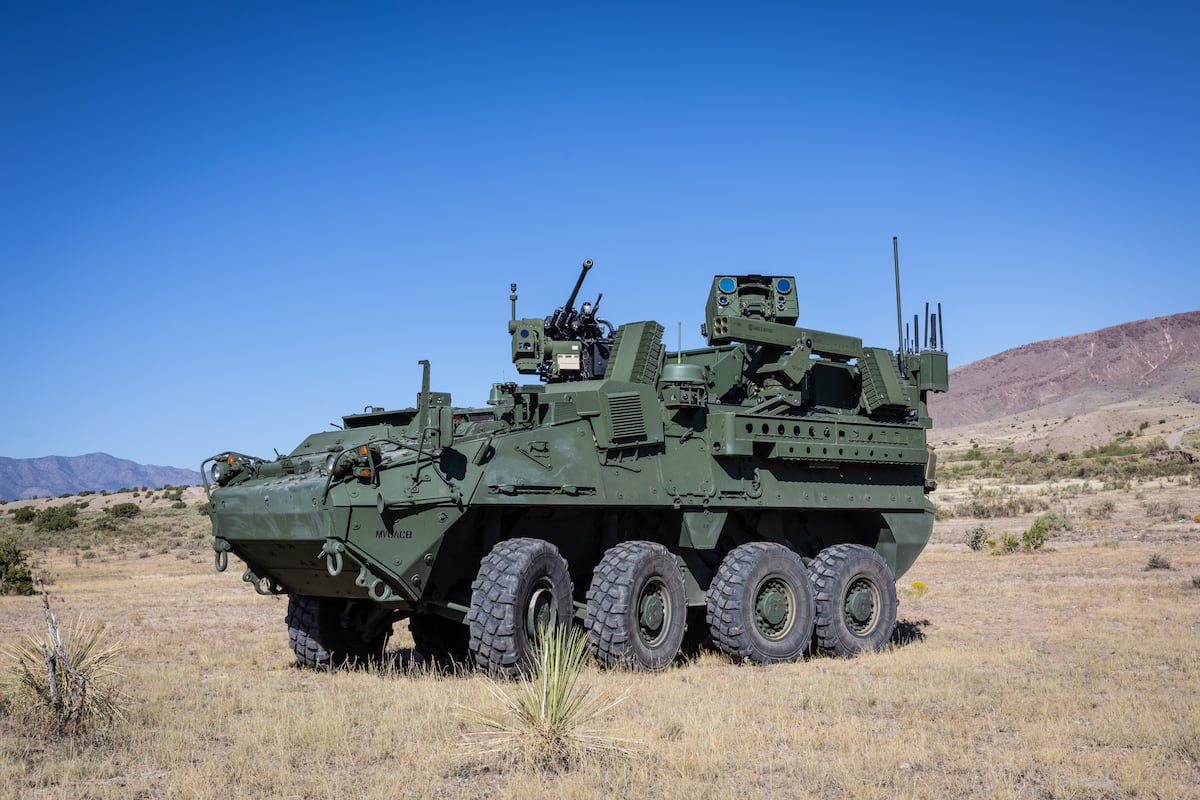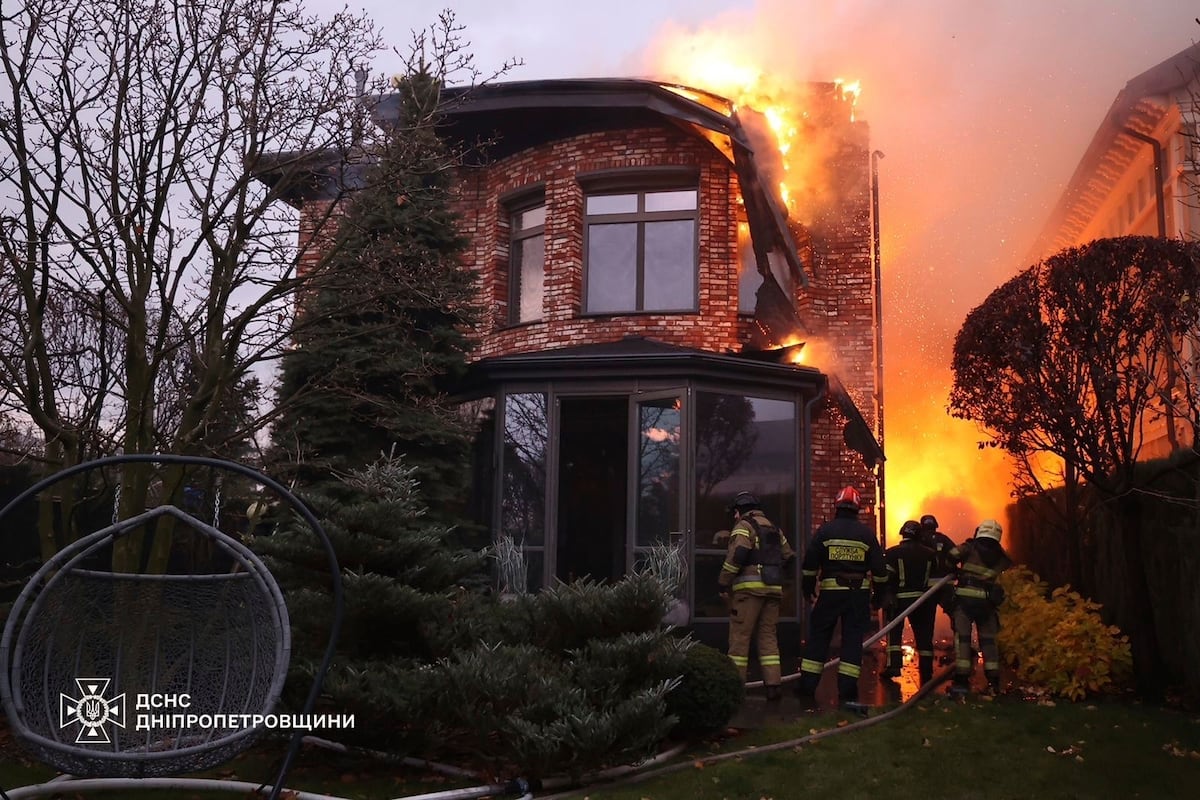Ukraine’s population has been shrinking rapidly during Russia’s invasion, and the decline could soon pose an additional existential threat to the country, the Wall Street Journal reported Tuesday.
Behind the numbers: “A confidential Ukrainian estimate from earlier this year put the number of dead Ukrainian troops at 80,000 and the wounded at 400,000,” the Journal writes. But for a country with a prewar population just under 50 million, “Russia’s invasions and capture of Ukrainian territory over the past decade have caused Ukraine to lose at least 10 million people under occupation or as refugees.” (Russia, by contrast, had a prewar population of just under 150 million and that number is not believed to have declined greatly since.)
But Kyiv’s concerns extend beyond those lost defending against the invasion. Indeed, “In the first half of this year, three times as many [Ukrainians] died as were born,” according to government data. And similarly, “One of the key reasons [President Volodymir] Zelensky refuses to mobilize the key cohort of men aged between 18 and 25—typically the bulk of any fighting force—is because most of these people haven’t had children yet,” the Journal reports.
The big question: “For Ukraine, the dilemma is existential: How many people can you lose in a war before losing your future?” said political scientist Ivan Krastev. Read more, here.
New: Russia just ordered another increase in its military, which—at 1.5 million active troops, supported by 890,000 civilians—would make it the world’s second-largest behind China. The new decree, signed by autocratic leader Vladimir Putin, raises the overall military size by 180,000; and that’s the third such increase since Putin ordered the full-scale Ukraine invasion in 2022 (with 137,000 and 170,000 troops added during those announcements).
Expert reax: “The current volunteer method is working but has strains,” said Dara Massicot of the Carnegie Endowment for International Peace, writing Monday on social media. In the months ahead, she said she’ll be “Look[ing] for signs that this is a real initiative to recruit and expand, and not a kind of show to intimidate others.”
By the way: Massicot published a new report late last week assessing a few goals Russia wants its military to achieve by 2030.
Why bring it up? “Apart from drone production, [Russian] equipment production capacities have plateaued as of early 2024,” she writes in the introduction. “Russia could generate more efficiency in the system by reducing corruption on the margins and reemphasizing innovation for certain technologies, but this would not result in a dramatic increase in available resources,” says Massicot.
Additional findings:
- “If early 2024 loss rates continue, Russia risks depleting available Soviet-era stockpiles for certain types of equipment possibly in 2026.”
- “Russia’s production capacity cannot be expanded much beyond 2024 levels unless new factories are built or Russian leaders accept the risk in temporarily halting exports (which is unlikely) or halting production while factories can be retooled.”
- “Russia has not reached far into its large reserve officer cadre, and nor have they lifted restrictions on the types of positions Russian women can hold in the military or the defense industrial base…Changes to these policies would be a signpost that Russia intends to expand the military or defense industry workforce.”
- “Russia does not possess the Soviet Union’s population, economy, and defense industrial base, which will limit the military’s quantitative growth potential. Nor does Russia have easy access to the most modern technology due to sanctions and domestic innovation shortfalls—which will ultimately limit the type of innovation it is able to achieve.” Read the full report (PDF), here.
Developing: NATO leader says each ally must make its own decision on long-range arms for Ukraine. Jens Stoltenberg noted Friday’s White House meeting between British Prime Minister Keir Starmer and U.S. President Joe Biden, where the two talked about allowing Ukraine to use its donated ATACMS and Storm Shadow munitions to strike deep inside Russia, as Kyiv has been asking for months. “I welcome these developments and these decisions but it’s for individual allies to make the final decisions,” Stoltenberg told Britain’s LBC radio. “Allies have different policies on this.” Reuters has more.
Related reading:
Welcome to this Tuesday edition of The D Brief, brought to you by Ben Watson with Bradley Peniston. Share your newsletter tips, reading recommendations, or feedback here. And if you’re not already subscribed, you can do that here. On this day in 1944, Allied U.S. and British forces launched Operation Market Garden.
New: Ohio deploys troopers after dozens of bomb threats to Springfield schools. State police are planning to conduct daily sweeps of schools in the western Ohio city after “at least 33” bomb threats that led to evacuations and temporary building closures, Ohio Gov. Mike DeWine said Monday.
Context: The bomb threats, closures, and other disruptions follow GOP presidential candidate Donald Trump’s amplification of false claims about immigrants in the city. AP has more, here.
Reminder: “If I have to create stories so that the American media actually pays attention to the suffering of the American people, then that’s what I’m going to do,” said Trump’s running mate Ohio Sen. JD Vance to CNN on Sunday—in a somewhat stunning televised admission that he’s been lying about immigrants simply for attention, attention that has turned into dozens of threats of violence.
Israel adds a Gaza-war goal: Trying to stop Hezbollah attacks. In a Tuesday statement, Israel’s security cabinet said that stopping the near-daily attacks on Israeli soil from across the border with Lebanon is now officially one of its goals for the war that started with Hamas attacks on Oct. 7. According to AP, the statement seems to presage a wider war, but it remains unclear just what it means operationally. More, here.
Developing: Exploding pagers wound a thousand Hezbollah members. On Tuesday about 3:45 p.m., the pagers that Hezbollah uses to communicate began to explode. More than 1,000 people were wounded as the devices blew up across Lebanon. A Hezbollah spokesman called the attack, for which no one has yet taken responsibility, the “biggest security breach” since the Gaza war began. Reuters has more, here.
New: U.S. troops officially concluded their withdrawal from coup-stricken Niger on Sunday, officials from the U.S. military’s Germany-based Africa Command announced Monday.
“This process began on May 19 following the mutual establishment of withdrawal conditions and continued with the withdrawal of U.S. forces and assets from Air Base 101 in Niamey on July 7, 2024, and Air Base 201 in Agadez on Aug. 5,” AFRICOM said in a statement. “Additionally, the U.S. Africa Command Coordination Element, consisting of a two-star General Officer and staff, has departed from Niger,” the statement reads.
Related reading:
In transit: The USS Theodore Roosevelt carrier is headed toward the South China Sea, with crew broadcasting its position as it transited the Singapore Strait on Tuesday.
Oopsie: The U.S. military shipped “unserviceable” ammo and equipment to Taiwan, Bloomberg reported last week, citing a DOD inspector general report (PDF).
How it happened, according to the IG report: In December 2023, the U.S. military delivered 340 water damaged pallets to Taiwan, 120 of which “contained wet and moldy body armor.” The same month, Taiwan’s Defense Ministry “issued a letter to the [American Institute in Taiwan Taipei Security Cooperation Office] stating that Taiwan received 2.7 million rounds of ammunition from the DoD, including some that was expired, in a mix of original, loose, and incorrect packaging.”
New: The U.S. said it will “return, repair, and reship” spare parts and equipment for Taiwan at “an estimated cost of $228 million,” the Pentagon’s Defense Security Cooperation Agency announced Monday.
Also from the region: The State Department last week approved the sale of “up to nine” KC-46A Aerial Refueling Aircraft to Japan for just over $4 billion. Details via the DSCA, here.
Related reading:
Lastly today: Air Force wants NGAD to cost no more than an F-35. Is that even possible? Defense One’s Audrey Decker reported Monday from the AFA convention just outside Washington, D.C.
Read the full article here








Leave a Reply